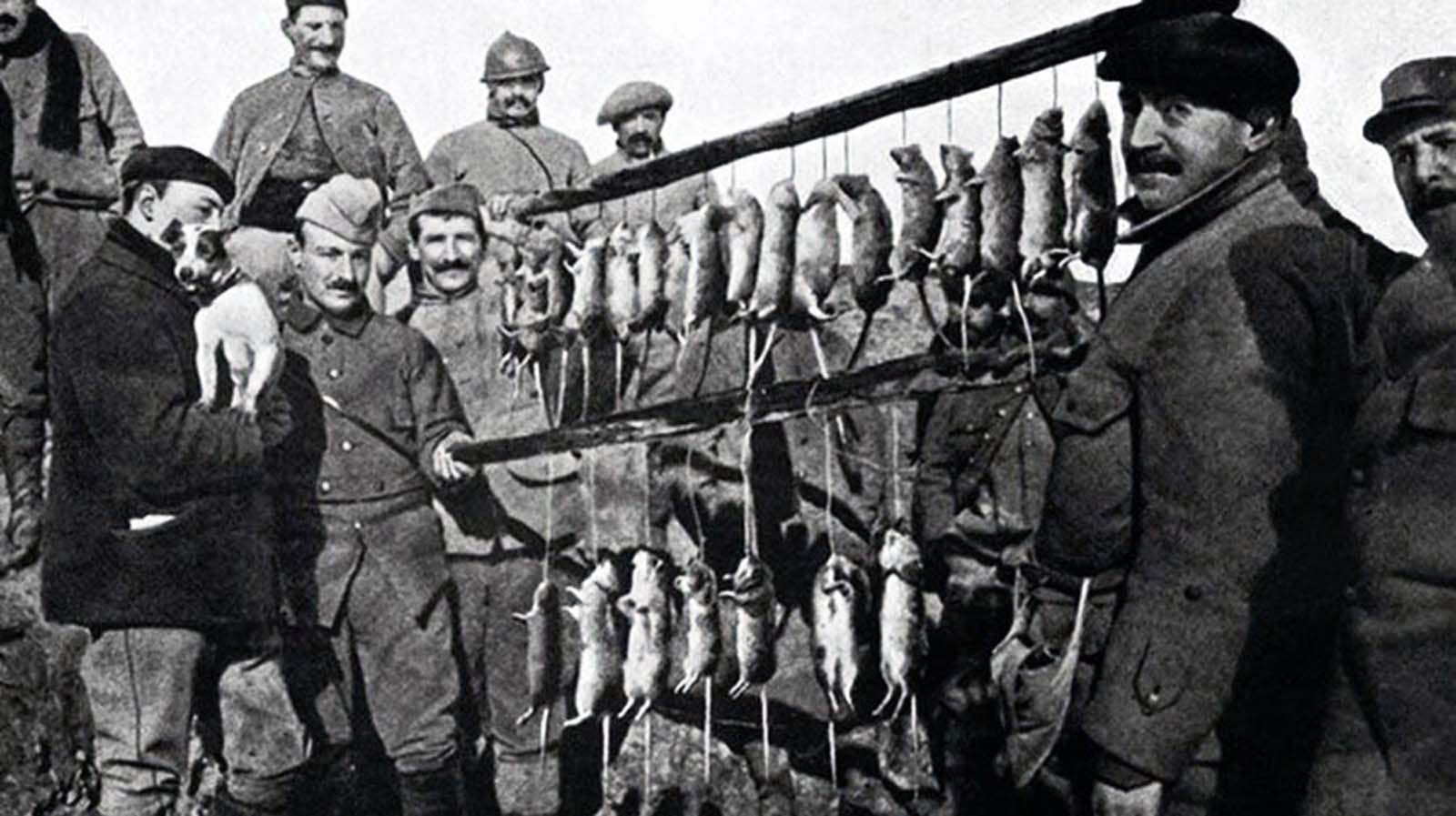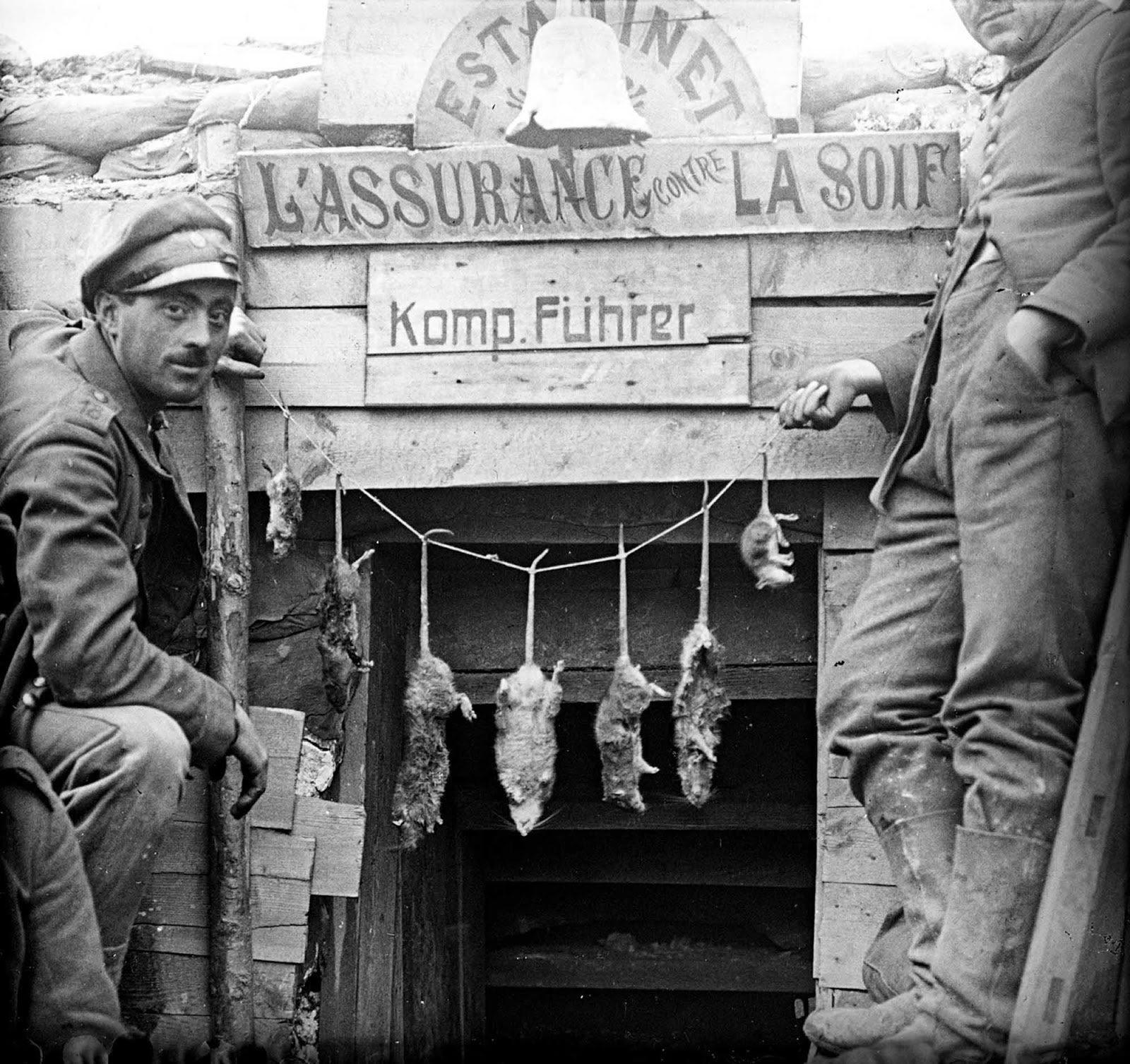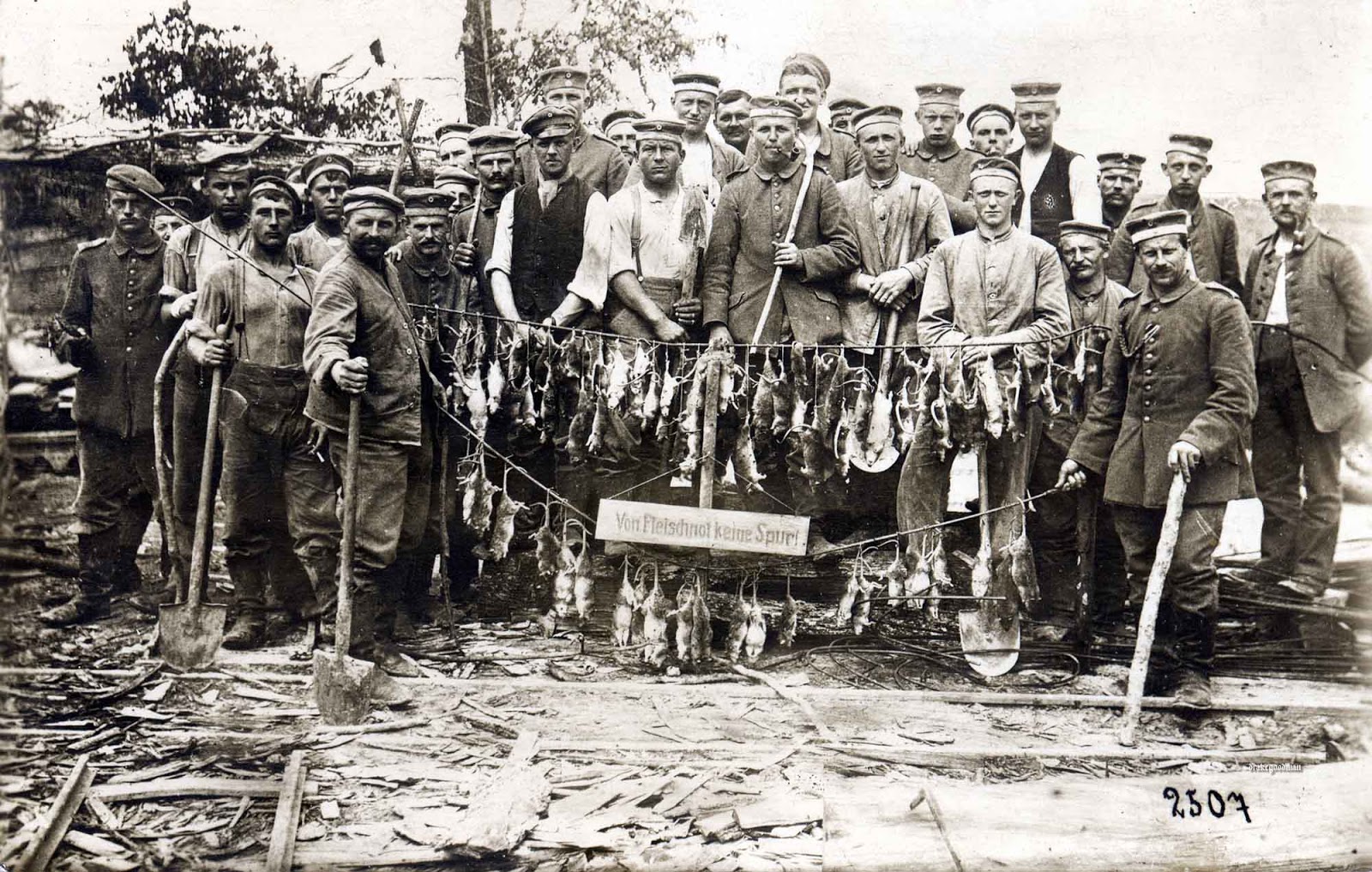Two or three rats would always be found on a dead body. They usually went for the eyes first and then they burrowed their way right into the corpse. Trench conditions were ideal for rats. Some of these rats grew extremely large. It was not uncommon for rats to start gnawing on the bodies of wounded men who couldn’t defend themselves. Many troops were awakened by rats crawling across their faces. These rats became very bold and would attempt to take food from the pockets of sleeping men. Disgusted and often feeling a horror of their presence, soldiers would devise various means of dealing with the rat problem. Although shooting at rats was strictly prohibited – being regarded as a pointless waste of ammunition – many soldiers nevertheless took pot shots at nearby rats in this manner. Attacking rats with bayonets was also common. But efforts to eliminate them proved futile. A single rat couple could produce up to 900 offspring a year. Cats and terriers were kept by soldiers in the frontline trenches to help free them of disease-carrying rats. The terriers were actually very effective in killing rats. There is a difference between a cat and a terrier when it comes to rodent control. When it comes to cats, even the best mousers only go after one at a time, and they often pause to eat. Generally, it can take them days/weeks to deal with an infestation because of this. With a good terrier, they will take care of your rat issues in a matter of hours. They don’t stop eating. They kill, then move on immediately to the next creature. They don’t play with their prey as cats do. They kill immediately. One terrier will also be much harder for rats to overwhelm as well. They are bigger and stronger than a cat, and their jaws are much bigger. That’s what they were bred, to kill rats. Robert Graves remarked in his book “Goodbye to All That“: “Rats came up from the canal, fed on the plentiful corpses, and multiplied exceedingly. While I stayed here with the Welch. a new officer joined the company and, in token of welcome, was given a dug-out containing a spring-bed. When he turned in that night he heard a scuffling, shone his torch on the bed, and found two rats on his blanket tussling for the possession of a severed hand.” George Coppard gave another reason why the rats were so large: “There was no proper system of waste disposal in trench life. Empty tins of all kinds were flung away over the top on both sides of the trench. Millions of tins were thus available for all the rats in France and Belgium in hundreds of miles of trenches. During brief moments of quiet at night, one could hear a continuous rattle of tins moving against each other. The rats were turning them over.” Richard Beasley, interviewed in 1993: “If you left your food the rats would soon grab it. Those rats were fearless. Sometimes we would shoot the filthy swines. But you would be put on a charge for wasting ammo if the sergeant caught you”. One soldier described finding a group of dead bodies while on patrol: “I saw some rats running from under the dead men’s greatcoats, enormous rats, fat with human flesh. My heart pounded as we edged towards one of the bodies. His helmet had rolled off. The man displayed a grimacing face, stripped of flesh; the skull bare, the eyes devoured and from the yawning mouth leaped a rat.” Most terrier breeds were developed in Great Britain and Ireland. They were used to control rats, rabbits, and foxes both over and under the ground. Some larger terriers were also used to hunt badgers. In fact, the word terrier comes from the Middle French terre, derived from the Latin terra, meaning earth. Terrier is also the modern French for “burrow”. (Photo credit: National Archives). Notify me of new posts by email.
Δ Subscribe







